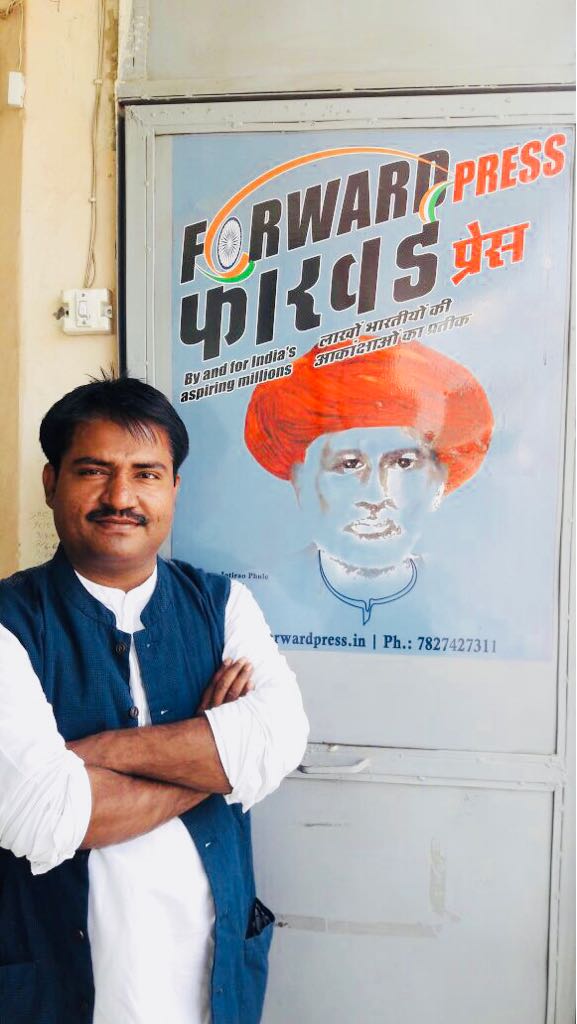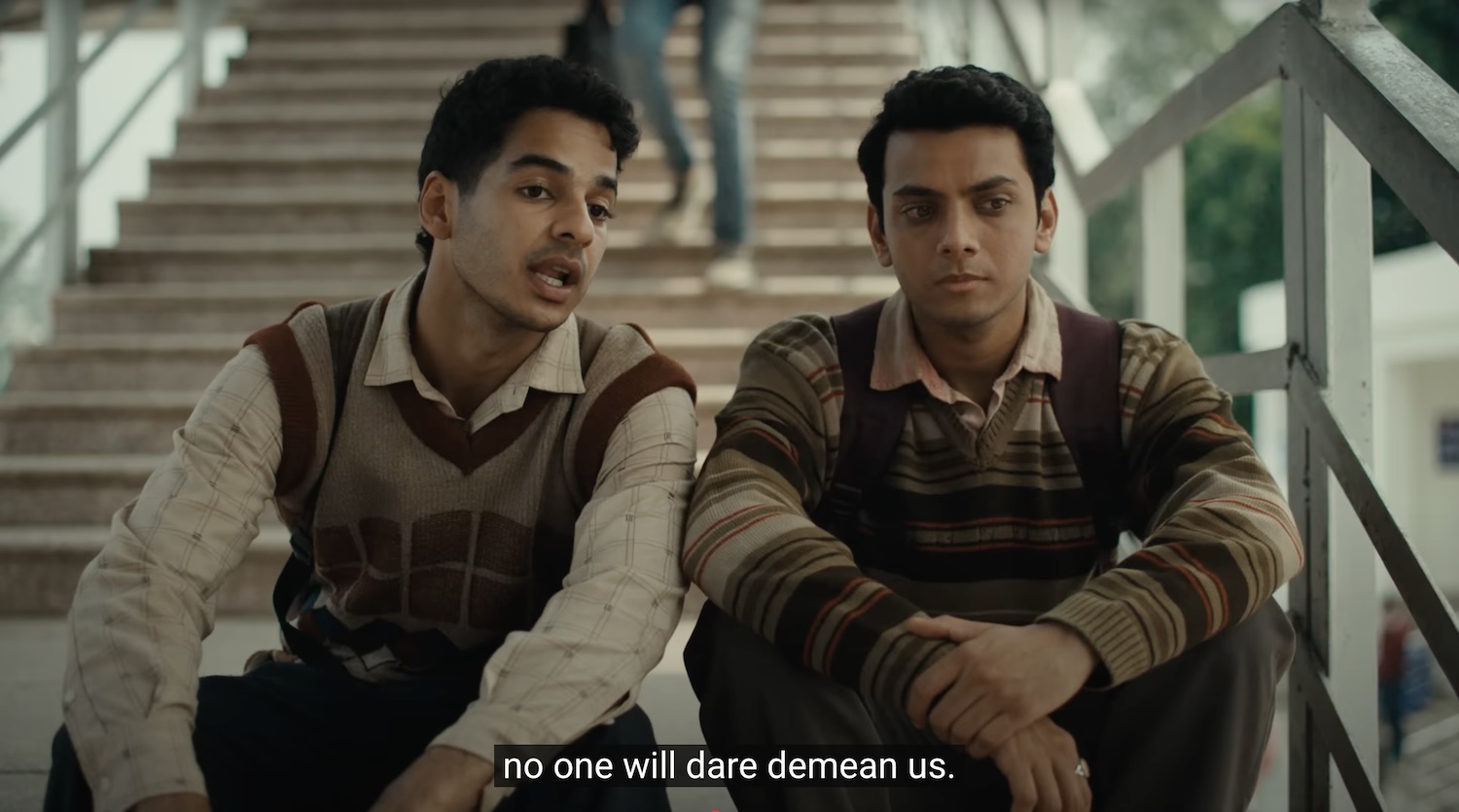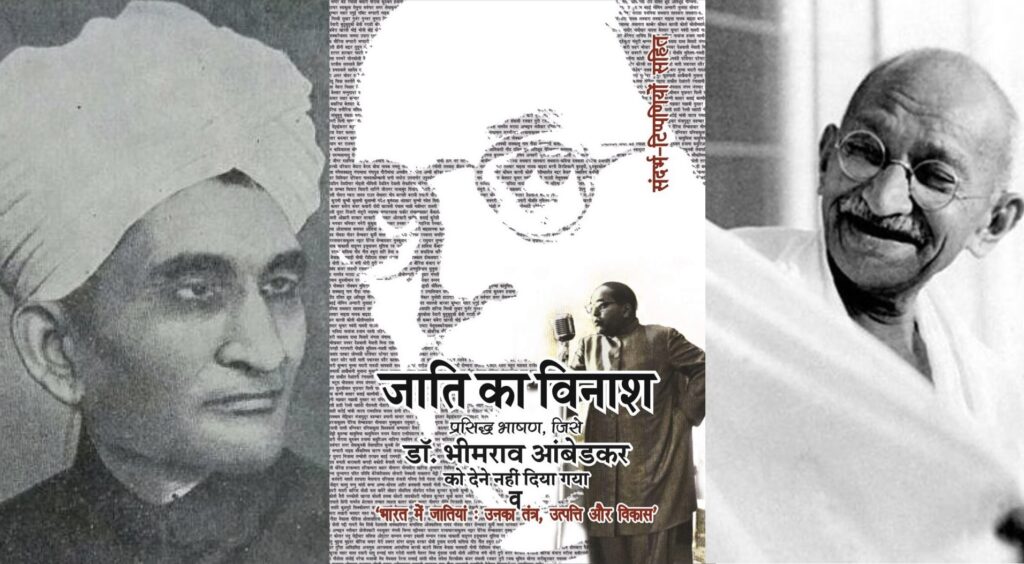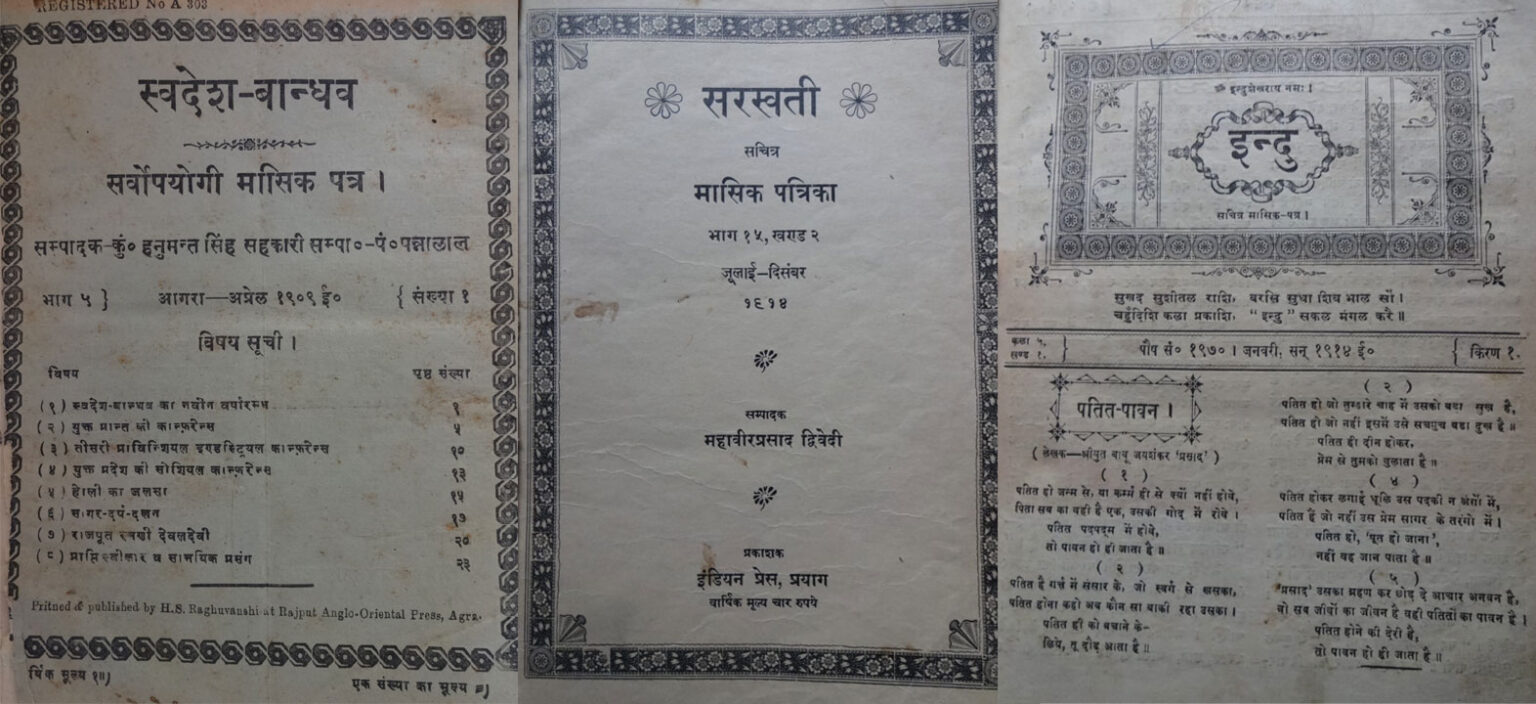Ekwari is a village about 80 km from Bihar’s capital Patna. There are two routes to reach Ekwari from Patna. One is via Ara, and the other via Bihta, Bikram and Arwal. We used the latter, crossing the Shatabdi Bridge over the Son River between Arwal and Sahar. When we were crossing the bridge, we did not know that on the river’s Sahar bank sits a memorial to Ram Naresh Ram (1924 – 26 Oct 2010). This came to my knowledge after I returned to Patna. Former MLA N.K. Nanda, who was my companion in the journey, told me that according to Manohar, one of his friends, Ram Naresh Ram’s last rites were performed at the spot where the memorial now stands.
Obviously, both of us regretted having missed the opportunity to visit the samadhi of Ram Naresh Ram – one of those who, in the 1960s, took forward the struggle that was initiated by the Triveni Sangh in the 1930s. Ram Naresh Ram had been among the founders of Communist Party of India (Marxist-Leninist) [CPI(ML)] in Bihar and an MLA from the Sahar assembly constituency.
The concept of social justice is not limited to representation in the government and the administration. It is basically about the universal right to work and lead a life with dignity. That was why the makers of our Constitution inserted provisions for identifying socially and educationally backward classes and for affirmative action for the upliftment of the Scheduled Castes and the Scheduled Tribes. But all over the country, Dalits, OBCs and Adivasis have had to struggle to secure their Constitutional rights, especially the right to education and employment. The situation is worse in Bihar, where, especially in its villages, the feudal social order holds strong. A decisive struggle was waged against the feudal social order in the latter half of the 1960s. This struggle was led by Ram Naresh Ram, Rameshwar Ahir (1934 – 14 January 1975) and Jagdish Master (10 December 1935 – 10 December 1972). All three were from Ekwari village – where Nanda and I arrived on 7 October 2025.

The only piece of information we had was that Rameshwar Ahir’s son Bihari Yadav was alive and that he might be able to tell us about the struggle. As we entered Ekwari, we saw a clutch of people seated at an intersection. We asked them about Rameshwar Ahir’s home. We were told that a lane led to his home, without specifying which of the many lanes we could see. At the corner of the street, a cobbler was repairing shoes and slippers. I thought that as the threesome Ram Naresh Ram, Rameshwar Ahir and Jagdish Master had fought for the poor and the deprived, the cobbler would know where Rameshwar Ahir used to live. We asked him, but the reply came from a middle-aged man sitting at a sweets shop across the road. “Rameshwar Ahir was my uncle. My name is Baiju Singh. Whom do you want to meet?” he said.
The man looked like a wrestler and his tone was rather rough. Nanda told him that he wanted to meet Rameshwar Ahir’s son to know about the struggle waged by his father. He also introduced me and himself to Baiju Singh, who then offered to escort us to Rameshwar Ahir’s house. On the way, he took us to a house. The door had a nameplate saying “Rajvallam Yadav”. Our guide told us that his real name was Baiju Yadav and that his grandfather, Doman Ahir had two sons – Rajvallam Ahir and Rameshwar Ahir – and that he is the son of Rajvallam.
Meanwhile, N.K. Nanda told me that in the past, Yadav and other similar surnames were recorded as Gop or Ahir in government documents. That was how Rameshwar Yadav must have become Rameshwar Ahir. Baiju Singh told us that Rameshwar Ahir’s elder brother Rajvallam Yadav had also participated in the struggle. He was sentenced to 20 years in prison. He completed his sentence and returned to the village, where he spent his remaining life. I asked Baiju Yadav whether he had seen Rameshwar Ahir. “I don’t remember. I was a child when he was martyred on 14 January 1975 at Sona Tola,” he replied.

Jagdish Master was martyred on 10 December 1972 at Bihiyan in Bhojpur and Ram Naresh Ram went underground. Then, who then took forward the movement that had begun in Ekwari? This was our next question. Baiju Yadav said, “By then, the party [CPI-ML] was active. The atmosphere in the village became very tense in 1982. The feudal forces were again raising their heads. I joined the struggle and we gave a befitting reply to our opponents. The tension reached a crescendo when the Ranvir Sena began flexing its muscles. Amid attacks and counter-attacks, a case was registered against me, and the cops began a hunt for me. Our houses were razed and our children were harassed. But the struggle did not stop. It was probably the year 1997, when district magistrate of Bhojpur, Amritlal Meena, constituted a peace committee in Ekwari. My comrades and I were absconding. It was conveyed to us that all of us should attend the peace-committee meeting. We were assured that the police wouldn’t take any action against us; in fact, the cases against us would be withdrawn. After this assurance, we attended the meeting and then surrendered to the police. We were sent to jail but were released subsequently.”
Baiju Singh was telling us about the struggle of the 1980s and 1990s. But we were more interested in the struggle of the 1960s. We wanted to know why three people from Ekwari led from the front as an anti-feudalism movement spread to the entire Bihar. Baiju Yadav took us to Rameshwar Ahir’s house. We could see a well, a foal, a dilapidated house and an elderly person lying on a wooden cot under a shed with an asbestos roof by the side of the entrance to the house. Baiju Singh introduced him as Bihari Yadav, the son of Rameshwar Ahir.
Bihari Yadav got up. He looked unwell and frail. His voice was not very clear. But he agreed to answer our questions. Does he remember anything about his father’s struggle? “How could I have? I was a child when he began the struggle. Even when he was sentenced to 20 years in prison, I was a child. He was charged with dacoity. After his release, he came here and divided his property among his successors. He said he would no longer live in the village. He had decided to devote his life to the revolution.”

Bihari Yadav said that even after his father’s martyrdom, violence continued in the village. Feudal elements killed Rajendra Chaudhari, who was from the Gadaria caste. Two or three persons from feudal families were also killed. One of them was Jagdish Singh. Bihari himself was also sentenced to 20 years in prison but, along with other prisoners, he was released four years early on Gandhi Jayanti.
We wanted to know how his family has preserved Rameshvar Ahir’s memories. “Do you have any photos of Rameshwar Ahir?” I asked. Bihari replied, “At the time, photography was not in vogue.” Baiju Singh added. “Once the struggle began, it became very risky to take photos and keep them. Photos would have helped the police and opponents identify the persons involved. Hence, no photo of Rameshwar Ahir, Jagdish Master and Ram Naresh Ram survives. There are images of Rameshwar Ahir and Jagdish Master displayed at the CPI (ML) office in Ara but they are paintings. As Rameshwar Yadav resembled Bihari, Rameshwar’s portrait was based on the latter.”
We were keen to know the kind of life the family of Rameshwar Ahir – who did not hesitate to lay down his life in the struggle for social justice – led. Baiju Yadav led us inside the house. It comprised a big courtyard and three-four rooms. While we were in the courtyard, Bihari Yadav, walking with the aid of a stick, came and took us to the part of the house that was made of mud and seized and razed many times by the police. Meanwhile, Bihari’s wife emerged from the house. We asked her about Rameshwar Ahir. She said that she hadn’t seen him because he was martyred before her marriage.
Our next destination was the house of Ram Naresh Yadav. We had been told that he had two daughters but neither now lived in the village. Baiju Yadav corrected us. He said that Ram Naresh Ram had three daughters – Devrani, Devanti and Suryavanti.

By the side of a canal stands the Paswan Tola of the village. Ram Naresh Ram’s house is located in the tola. As we were walking towards his house, Nanda related an interesting incident. After Ram Naresh Ram’s election as an MLA, he was provided a guard by the government. The guard reached Ekwari and asked a person the way to “Vidhayak ji’s” (respected legislator’s) house. The man pointed to a house made of mud. The guard immediately pulled out his cane and hit him, demanding to know how an MLA could live in a mud house.
We were at Ram Naresh Ram’s house. Baiju Yadav told us that Ram Naresh had given his house to his sister. Her son’s children live there now. We expressed our desire to meet them. A woman emerged from the house and told us that she was Ram Naresh’s “bhageen patoh” (wife of sister’s son). Some women sitting under the shade of a tree introduced themselves as Ram Naresh’s relatives. One of them said that she was his “bhavaj” (wife of younger brother). They said that Ram Naresh Ram was elected an MLA many times but did nothing for his family and relatives. The disappointment was writ large on their faces. Then, an elderly woman intervened, saying that even if Ram Naresh didn’t do anything for his family and relatives, he was a noble soul.
A day before our visit, that is on 6 October, Krishnadev Yadav, a senior member of the CPI (ML), had told me in Patna that Ram Naresh Ram had been the leader of the Sahar movement. At the time, Jagdish Master was demanding a separate “Harijanistan” (a state for the Harijan or the Dalit). Ram Naresh Ram was already active on the ground. In 1965, he was unanimously elected the mukhiya (head) of the Ekwari Panchayat. He was associated with the CPI and the CPM, which fielded him as a candidate in the 1967 Assembly Elections. During those elections, Jagdish Master and Ram Naresh Ram were assaulted by feudal elements.
Ram Naresh Ram has himself recalled: “In 1965, I was elected as the Mukhiya of the Gram Sabha. Then, some mischievous elements convened a meeting of some castes to plot my murder. But they gave up the idea after they realized that the other side was also united. Then came the Assembly Elections of 1967. I was the CPM candidate. Jagdish Master was our election agent. On the day of the voting, the musclemen of the village landlords were running amok – planning attacks and taking over polling booths. Master Saheb and I visited some polling booths and had some fake voters arrested. That was more than they could take. They locked me in a house and began thrashing Jagdish Master. Some people rushed to help him but they were beaten up till they became unconscious. The assailants walked away, taking Master Jagdish to be dead. A labourer moved him to his home. Even though he was injured, he resolved to wreak vengeance on the feudal elements and annihilate their arrogance. Meanwhile, Rameshwar alias Sadhu ji, already influenced by Communist ideology, was released from prison and we all joined the Communist movement.”
Ram Naresh Ram shared these details at a rally in Delhi on 8 October 1989. That was the first time he made a public appearance. The developments of that day have been reported in a booklet published by CPI (ML).
Madan Sah related the same story to us. He runs a sweets shop at an intersection in Ekwari. He said that Jagdish Master and him were of the same age. Jagdish Master taught in a school. Madan Sah told us that on the day of voting for the assembly elections, the feudal elements beat up Jagdish Master and Ram Naresh Ram, leaving them half dead. Then, both groups decided to take up arms. Rameshwar Ahir had just returned after spending 20 years in prison. He, too, joined the struggle.
According to N.K. Nanda, Rameshwar Ahir was a self-respecting man. He wouldn’t bow to upper-caste elders or greet them. Once they complained to his father. But Rameshwar said that he wouldn’t greet those whose children didn’t greet his father. Rameshwar made it a point to dress clean, which also infuriated the feudal elements. That was why he was framed in many criminal cases, including dacoity. Later, he actually became a dacoit but targeted only feudal elements who committed atrocities. In one such case, he was sentenced to life imprisonment, which meant 20 years in prison.
Madan Sah told us how the three mobilized the Dalits and the Backwards of the village and persuaded them to join the struggle. They also trained the would-be warriors.
We were now in the last phase of our journey. A narrow lane leads southwards from the intersection where Madan Sah’s shop is located. The tola is inhabited by the Koeris. To the west of the road, we saw a memorial inscribed with details about the martyrdom of Jagdish Master, Rameshwar Ahir (Sadhu ji) and Comrade Sheela. The memorial is in a field and the only way to reach is to wade through the sludge.
We reached Jagdish Master’s house. He was from a well-off family of farmers. Nanda told me that during his visit to the village in 1976, Ayodhya Singh, an acquaintance of his, had told him about Jagdish Master. Ayodhya Singh’s house was also close by. Jagdish Master had five children – three daughters and two sons. They were Urmila Devi, Usha Devi, Ashok Kumar Singh, Anil Kumar Singh and Asha Devi. Baiju Yadav told us that Usha was married to Bhagwan Singh Kushwaha, who won the assembly polls as a nominee of the CPI (ML). He later joined the Janata Dal-United (JDU) and was appointed a minister in the Bihar government.
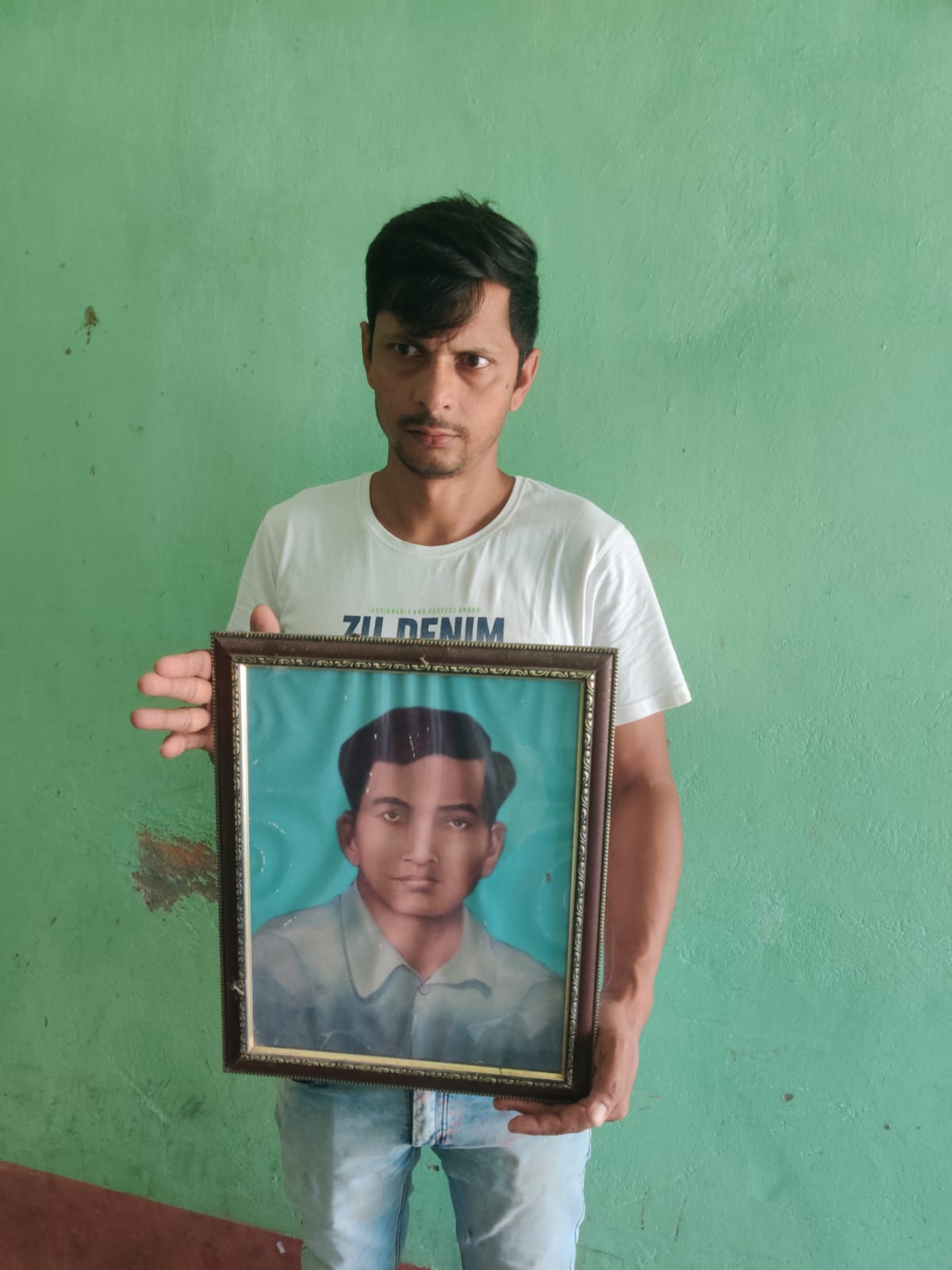
We were sitting in the courtyard of Jagdish Master’s house. A young man came out and introduced himself as Vipin. He said that Jagdish Master was his “bade chacha” (father’s elder brother). He also told us that Jagdish Master’s father was Sudama Mahto and had two brothers, Sahdev Mahto and Rampreet Mahto. Vipin said that his father, Vasudev Mahto, was the son of Rampreet Mahto. We asked him whether he knew about the exploits of Jagdish Master. His reply: “Yes, I have read about him in one or two books. One was Mahashweta Devi’s novel ‘Master Saheb’. I had read another book at the home of Asha Didi.” We guessed that the other book must have either been ‘Bhojpur: Bihar Mein Naxalwadi Andolan’ by Kalyan Mukherjee and Rajendra Singh Yadav or Madhukar Singh’s works of fiction. Madhukar Singh’s short story “Kavi Bhunesar Master” and novel “Arjun Zinda Hai”(published under the title “Jagdish Kabhi Nahin Marte” were inspired by Jagdish Master’s life.
We were disappointed not to find a single photo of Jagdish Master in his house. When we asked Vipin, he fetched a painting from inside the house. We wanted to meet his father, Vasudev Mahto. We were told that he was playing cards near a temple on the river bank. We met him but the only piece of information we could glean was that he was just 4-5 years of age when Jagdish Master was martyred and hence he doesn’t know much about the incident.
We asked Baiju Yadav about the present situation in the village. He said he wouldn’t call it normal. The feudal elements keep on playing mischief. But they are rather fearful now. Heroin and hashish are being sold in the village. The feudal elements are using the Dalits for this purpose. Substance abuse is eating into the vitals of the village. “Sometimes we ask ourselves, ‘Is it for this that Jagdish Master, Ram Naresh Ram, Rameshwar Ahir and hundreds of others laid down their lives?”
We were on our way back. Nanda pointed to the roadside memorial to Rajendra Chaudhary. A red flag fluttered. We had left Ekwari behind – the village whose three residents built on Triveni Sangh’s legacy. Nanda said, “Had we not come here, we would not have known about the struggles the family of Rameshwar Ahir fought and the difficulties they faced after his martyrdom. Sadly, this has not been written about.”
(Translation from the original Hindi by Amrish Herdenia)
Forward Press also publishes books on Bahujan issues. Forward Press Books sheds light on the widespread problems as well as the finer aspects of Bahujan (Dalit, OBC, Adivasi, Nomadic, Pasmanda) society, culture, literature and politics. Contact us for a list of FP Books’ titles and to order. Mobile: +917827427311, Email: info@forwardmagazine.in
